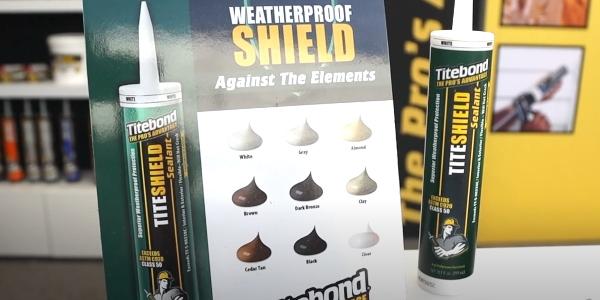Which Type of Coating Better Withstands Ponding Water
By Western Colloid.
Improper drainage can be detrimental to a building’s roof.
Undetected leaks can lead to extensive water damage for your customers’ roofs, not to mention the potential for mold growth and structural damage.
A commercial building’s roof takes a beating, exposed to the elements as it is. And if it doesn’t drain properly, then the roofing materials become subject to the added stress of ponding water. While a puddle after a rainstorm is common, if the water is still there two or three days later, it could prematurely deteriorate the roofing system.
Ponding water can also create a number of other problems for buildings. If there is a large amount of water sitting on the roof it creates an unexpected structural load on the building. This can damage not only the roofing membrane, but it could also seriously impact the structure of the building and may even cause the roof to collapse.
Most cases are less extreme and ponding water is simply a primary source of leaks as it degrades roofing seams and systems and the water finds its way into the building.
Replacing the roof when only one area is experience ponding water is an expensive proposition. Many contractors will propose solutions like acrylic roof coatings or silicone roof coatings, but there are pros and cons to each.
![]()
Preventing ponding water damage
The first step to avoiding ponding water damage is to prevent it from becoming a chronic problem. Maintenance staff should be conducting regular roof inspections, and when they notice that ponding water is occurring, it should be addressed quickly.
Ponding water can be caused by a number of problems, and there are a variety of fixes, depending on the extent of the ponding and the age of the roof.
-
Repitch the roof. If ponding is occurring because the roof is improperly sloped, or due to sagging as the roof ages, then you may need to hire a contractor to repitch the roof. This option can be expensive and costly, so before you make that decision, consider other simpler fixes.
-
Check drains for blockages and clogs. This is the simplest and fastest fix. If the roof is designed to drain properly, then it’s possible those drains are simply blocked with leaves or other debris. Check them regularly to prevent water from backing up during rain events.
-
Install additional drains and crickets. If the drainage installed is insufficient, you may need to add more, particularly if the ponding is caused in part by an aging roof that is starting to sag. While this step is more involved than cleaning the existing drains, it’s stiller faster and cheaper than repitching the entire roof.
-
Repair low points. If you’re not yet at a place where you can or need to repair the entire roof, then you may just need to repair the low points. Removing and replacing damaged materials, or building up sagging areas, and making sure they’re covered with a high-quality waterproof coating can extend the overall lifespan of the roof.
![]()
Which coating to choose: acrylic or silicone?
A commercial roof coating is a great way to bring extra longevity to the building, without going to the time and expense of a complete tear-off and replacement. A product like an acrylic reinforced roof coating offers a number of benefits, including:
-
Highly durable and long-lasting. Acrylic reinforced roof coatings like 720 ARC Elastahyde or 790 AFC ElastaHyde are applied with layers of polyester fabric, creating a durable barrier to protect the building from the elements.
-
Energy-efficient. Acrylic roof coatings usually go on white and are highly reflective of solar energy, rather than absorbing it the way darker colored coatings and membranes do. They can also be manufactured in energy-efficient tan or gray colors that still meet the energy code requirements for a cool roof. The white, light tan or light gray options reduce the energy load in the building and save your customer money in cooling costs.
-
Compatible with many roof systems. Products like Western Colloid’s ElastaHyde-720 and 700 EC Western White are designed to be applied over a variety of bituminous, foam, metal and gravel roofs, eliminating the need for a tear-off and replacement.
Acrylic coatings are designed to be water-resistant and are more than capable of standing up to heavy rain, provided the roof drains properly. However, if the roof doesn’t have perfect drainage and ponding water is an ongoing issue, make sure the coatings being applied to the roof are a high-quality acrylic coating with proven pending water performance and that they are being installed properly.
An acrylic coating such as Elastayhyde- 720, reinforced with a layer of polyester, has been proven over and over as resistant to ponding water. The polyester in the water-based product adds strength and durability in standing water and is easily renewable.
If ponding water is an issue on a large portion of the roof or if the roof is in a particularly wet climate, silicone can be an effective solution. As a non-water-based product, it will stand up better over time where water collects. However, a silicone coating should never be applied to a ponding area without the proper primer.
Silicone has a high vapor transmission rate and will not completely block moisture from penetration through to the membrane. The silicone coating itself will hold up to the ponding water but the membrane underneath may not. In addition, silicones that are not reinforced with a polyester membrane are prone to stress cracks because silicone has very low tensile and tear strength.
Silicone roof coatings are often recommended to building owners as an economic roofing solution that is easy and fast to apply. But not all silicone coatings are sustainable because adhesion for reapplication or repairs is questionable.
Make sure the silicone coatings are proven to be recoatable. Many silicones are difficult to adhere to when a repair needs to be made or when it’s time for recoating to renew the warranty. Improperly installed, they can lead to premature failure that is likely to result in a roof that needs to be torn off and replaced and water damage.
The biggest difference between acrylic and silicone behavior in ponding water is that acrylic coatings may tend to curl or peel up in water under certain conditions where silicone coatings can sit in ponding water with no problem but they may stress crack and allow and leaks through the cracks. Silicone coatings could also pass large amounts of water vapor through to the underlying membrane without a vapor barrier primer.
The bottom line is both types of coating benefit from polyester reinforcement. In acrylic, the polyester binds the coating to stand up to ponding water, and in silicone, it creates the strength it needs to handle stress from movement and prevent cracking.
Alternatively, if your customer wants the extra durability that comes with acrylic coatings, make sure you’ve chosen a product formulated specifically to stand up to ponding water. Options like 770 AXP ElastaHyde, which is a ponding resistant base coat, should be considered for roofs where a large percentage of the roof area has ponding water and the acrylic coating will not be reinforced.
![]()
The bottom line
If you want a proven roof coating solution that gives you durability and compatibility with other roofing systems and also provides you some peace of mind when it comes to waterproofing — then the best bet is to go with tried and true systems by a trusted manufacturer who has over 45 years of successful installations.
Learn more about Western Colloid in their RoofersCoffeeShop® Directory.
Original article source: Western Colloid






















Comments
Leave a Reply
Have an account? Login to leave a comment!
Sign In